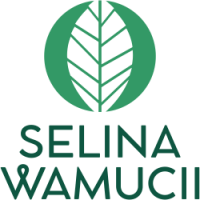Eschenbachia maxima - Uses, Benefits & Common Names
Kingdom:
Phylum:
Angiosperms
Order:
Asterales
Family:
Genus:
Species:
maxima
ID:
134236
Status:
valid
Authors:
(Zoll.) J.Kost.
Source:
gcc
Year:
1952
Citation Micro:
Blumea vii. 290 (1952)
WFO Identifier:
wfo-0000133565
Common Names
- Maxima Eschenbachia
- Eschenbachia maxima
- Maxima
Searching for Eschenbachia maxima? Discover Suppliers and Request Free Samples Now!
Find Suppliers & Request SamplesDescription
Eschenbachia maxima (also called Large Eschenbachia, among many other common names) is an annual herbaceous plant with white flowers that is native to South America. It is found in disturbed sites, along roadsides, and in open grasslands.
Uses & Benefits
Eschenbachia maxima has been used as an ornamental plant and for its medicinal properties. It has anti-inflammatory and antiseptic properties and can be used to treat skin conditions such as eczema.
Flower, Seeds and Seedlings
The flower of Eschenbachia maxima is a yellow-green disc floret with a yellow center. The seed is a small, dark brown achene with a short beak. The seedlings are small, with a single, long, narrow leaf.
Searching for Eschenbachia maxima? Discover Suppliers and Request Free Samples Now!
Find Suppliers & Request SamplesCultivation and Propagation
Eschenbachia maxima is a perennial plant that can be propagated by division or by seed. To cultivate it, sow the seeds in a well-drained soil in a sunny location. Water the soil regularly and fertilize it once a month. The plant will bloom in late summer and early autumn.
Where to Find Eschenbachia maxima
Eschenbachia maxima is native to Central America and can be found in the countries of Costa Rica, El Salvador, Guatemala, Honduras, and Nicaragua.
Eschenbachia maxima FAQ
What is the scientific name of Eschenbachia maxima?
Eschenbachia maxima
What is the common name of Eschenbachia maxima?
Maxima Eschenbachia
What is the natural habitat of Eschenbachia maxima?
Eschenbachia maxima is found in the Mediterranean region of Europe
Species in the Eschenbachia genus
Species in the Asteraceae family
Aaronsohnia pubescens, Aaronsohnia factorovskyi, Abrotanella filiformis, Abrotanella rostrata, Abrotanella linearis, Abrotanella trilobata, Abrotanella muscosa, Abrotanella inconspicua, Abrotanella trichoachaenia, Abrotanella caespitosa, Abrotanella nivigena, Abrotanella pusilla, Abrotanella linearifolia, Abrotanella papuana, Abrotanella rosulata, Abrotanella emarginata, Abrotanella fertilis, Abrotanella spathulata, Abrotanella purpurea, Abrotanella patearoa, Abrotanella submarginata, Abrotanella diemii, Abrotanella scapigera, Abrotanella forsterioides, Acamptopappus shockleyi, Acamptopappus sphaerocephalus, Acanthocephalus benthamianus, Acanthocephalus amplexifolius, Acanthocladium dockeri, Acanthodesmos distichus, Acanthodesmos gibarensis, Acanthospermum humile, Acanthospermum consobrinum, Acanthospermum glabratum, Acanthospermum microcarpum, Acanthospermum hispidum, Acanthospermum australe, Acanthospermum lecocarpoides, Acanthostyles buniifolius, Acanthostyles saucechicoensis, Achillea buiana, Achillea conrathii, Achillea cucullata, Achillea styriaca, Achillea clavennae, Achillea cappadocica, Achillea huber-morathii, Achillea ptarmicoides, Achillea sieheana, Achillea barrelieri,
References
Joséphine Thérèse Koster (1902-1986): Based on occurrence of standard abbreviation 'J.Kost.' in the authors string.
Heinrich Zollinger (1818-1859): Based on occurrence of standard abbreviation 'Zoll.' in the authors string.
POWO record for urn:lsid:ipni.org:names:205044-1: Based on the initial data import

